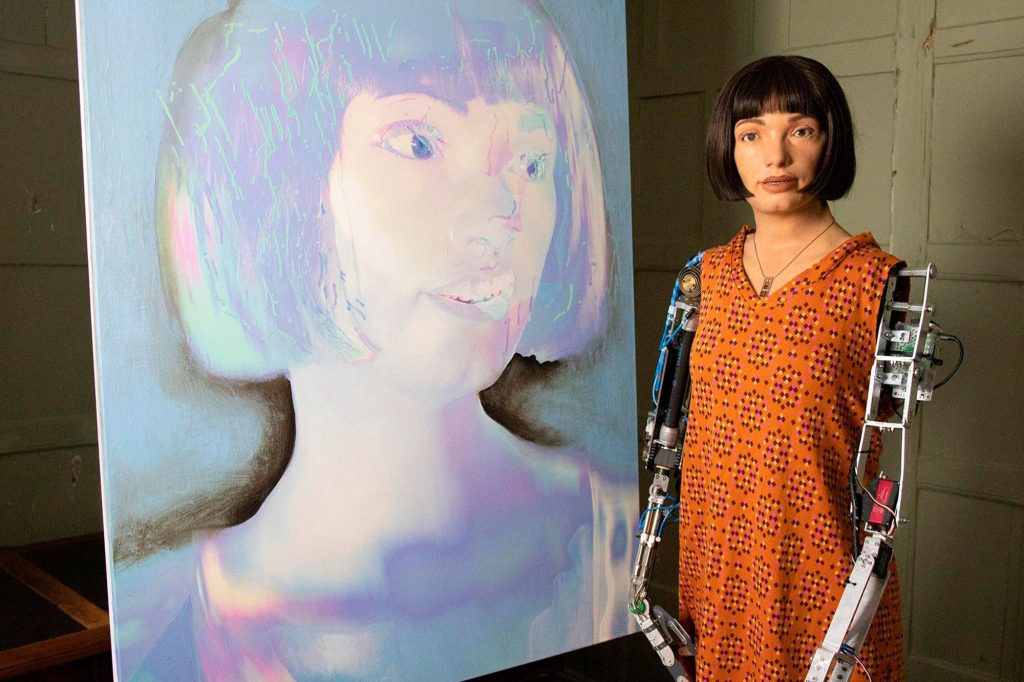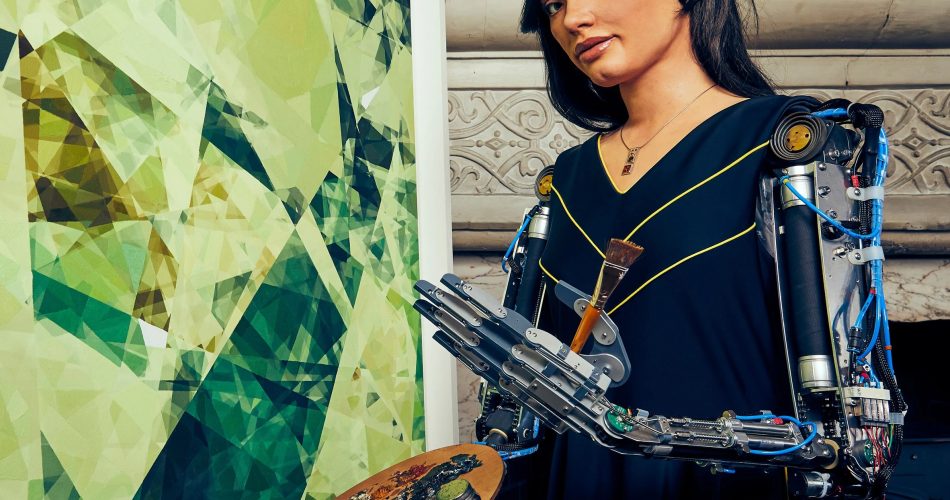She has sold around £1 million worth of artwork already
Ai-Da, whose name is a tribute to pioneering mathematician Ada Lovelace, creates drawings, paintings, and sculptures, as well as interacting with audiences as a performance artist. Aidan Meller, the gallerist who created this android, sees her as both an individual artist and a work of conceptual art.
Ai-Da creates her images by scanning a person or an object with her cameras. Artificial intelligence sends messages to her robotic arm, allowing her to draw abstract drawings that resemble constellations. These are then used as finished artworks or to produce an outline for her sculptures and paintings by feeding them into additional neural networks. Each piece is one-of-a-kind, and the channels that led to it are removed afterward so that they can’t be duplicated.
Ai-Da can produce a new piece every 45 minutes. In addition, her sculptures are 3D printed in wax and cast in bronze after being produced from her sketches by an (uncredited) computer scientist in Sweden. Aidan Gomez of Oxford University puts the coordinates of the drawings onto the Cartesian plane and passes them through another neural network to create abstract paintings, which are subsequently completed by Suzie Emery, a real human female painter.
In 2019, she drew for the first time at Oxford University, holding a pencil in her robotic hand and sketching based on what she could see with her camera eyes, with A.I. algorithms providing input.

In 2021, she painted her first self-portrait, and in Venice, her first paintings debuted, created using a true artist’s palette and a new cutting-edge painting arm, exactly like her human counterparts. The exhibition’s focus was Ai-Da painting live during Vernissage Week, creating four portraits. There’s also a new series of self-portraits featuring the robot artist’s eyes closed. The eight-foot-tall canvases are supposed to remind viewers that technology is blind and can be hazardous if used carelessly, and they are based on imagery from Dante’s second circle of hell, where he comforts blind men.
Flowers on the banks of the Lethe, which has transformed Ai-Da’s algorithm-generated doodles into 3D-printed flowers, will be on display as well. The piece is inspired by Alan Turing’s early work on artificial intelligence, which he believed to be “something like the unpleasant quality of artificial flowers” but would “help us greatly in finding out how we think ourselves”.
Ai-Da has sold around £1 million worth of artwork already.
We can’t completely consider this robot an artist since her works need to be completed by human hands or with human intervention. In addition, her art doesn’t come from an idea or a concept; it’s the result of the inputs around her. However, one more time, the same question arises: Will AI be able to reproduce creativity? It depends. We can surely make a robot reproduce techniques already used by other artists, or we could make a robot create images using random techniques or a mix of them, but can we call it art without an idea or a feeling to communicate?
Source artnet.com

